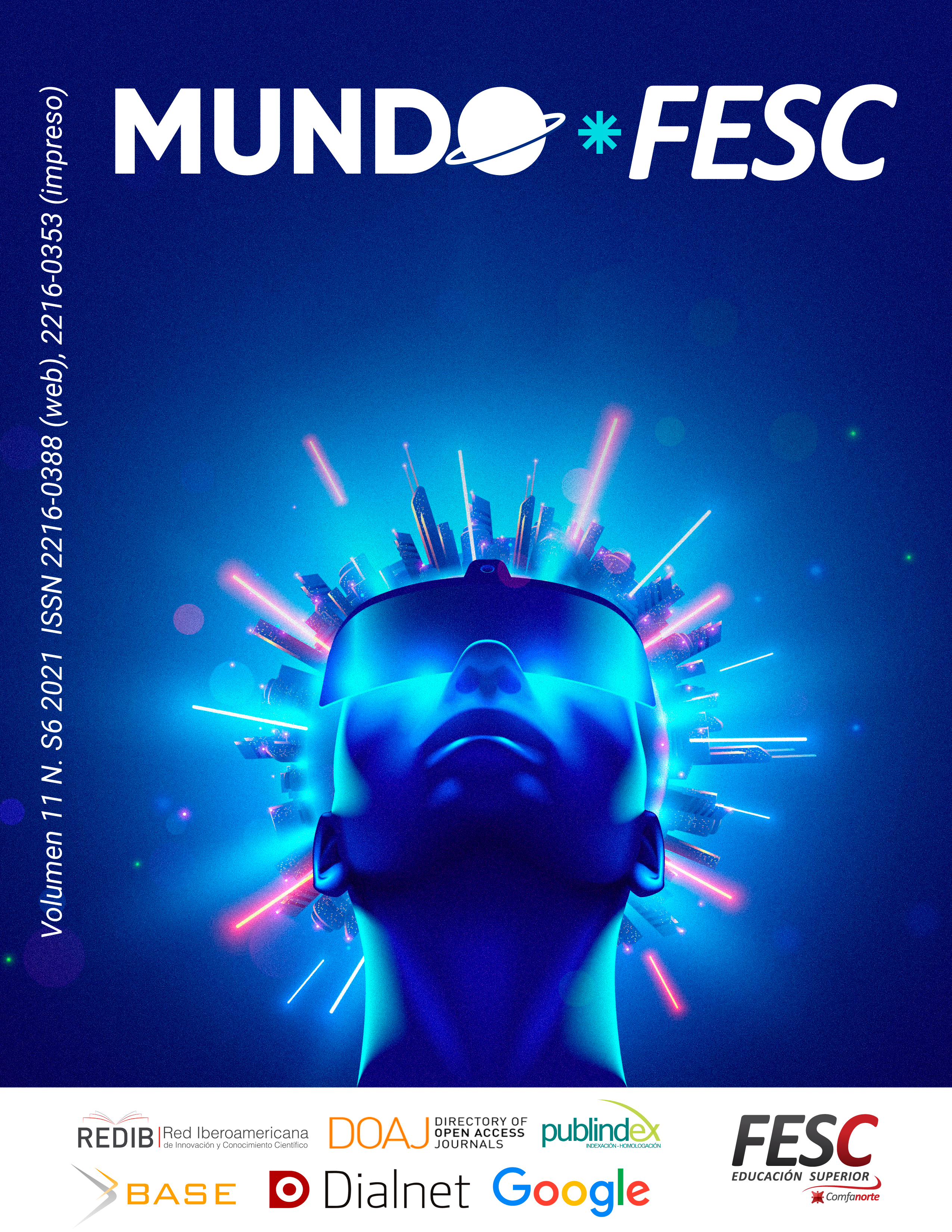Relationship between multiple intelligences and gender
DOI:
https://doi.org/10.61799/2216-0388.1125Keywords:
multiple intelligences, gender, multiple correspondence, masculine, feminineAbstract
Howard Gardner affirms in his theory of multiple intelligences that there is not only one intelligence, but that people have eight intelligences that are interrelated, facilitating the human being's ability to solve environmental problems more efficiently. But depending on the genetics and the context, people tend to have one or some more developed than others. For the present investigation, the question arose if there was a difference between multiple intelligences and the gender of the person. The design used was a cross-sectional, non-experimental, correlational, quantitative approach with a multi-stage conglomerate probabilistic sample of 573 students from the city of Cúcuta in grades 5 and 6 of basic education, with an average age of 11.16 years and a deviation of 1.37 years old, the collection instrument was made up of two sections, the first made up of the sociodemographic information, sex and age, and the second made up of the questions from the multiple intelligence questionnaire, adapted from McKenzie. Chi-square hypothesis test and multiple correspondence analysis were implemented. High levels of naturalistic, kinesthetic and logical mathematical intelligence were evidenced in male students, as well as high levels of interpersonal, intrapersonal and linguistic intelligence in female students.
Downloads
References
H. Gardner. Frame of Mind: The theory of multiple intelligences. Nwe York: Basic Book, 1983
H. Gardner, T. Hatch, “Multiple intelligences go to school: Educational implications of the theory of Multiple Intelligence”, Educational Researcher, vol. 18, no. 8, pp. 4-10, noviembre 198.
G. A. Rincón, A. J. Aguilar. Las inteligencias múltiples como estrategia didáctica para mejorar el rendimiento académico de matemáticas en la básica primaria. En J. P. Salazar, Y.L. Contreras, J. F. Espinosa (Ed.), Investigación y Praxis en la Enseñanza de las Matemáticas (pp. 179-202). Barranquilla: Ediciones Universidad Simón Bolívar, 2018
C. A. Hernández, R. Prada, G, A, Rincón, “Inteligencias múltiples y rendimiento académico del área de matemáticas en estudiantes de educación básica primaria”, Infancias Imágenes, vol. 17, no. 2, pp. 163-175, octubre 2018
T. García, E. Fernández, A. Vasquez, P. García, C. Rodríguez, “El género y la percepción de las inteligencias múltiples. Análisis en función del informante”, Psicología Educativa. Revista de los Psicólogos de la Educación, vol. 24, no. 1, pp. 31-37, enero 2018
Y. Ramírez, M. Navas, V. López, “Un estudio sobre la creatividad, el género, la edad y las inteligencias múltiples en alumnos de Educación Secundaria Obligatoria de España”, Praxis educativa, vol. 23, no. 1, pp. 1-16, enero 2019
Y. R. Díaz, M. N. Prados, V. L. Fernández, “Un estudio sobre la creatividad, el género, la edad y las inteligencias múltiples en alumnos de Educación Secundaria Obligatoria de España”, Praxis Educativa, vol. 23, no. 1, pp. 128-134, enero 2019
H. Gardner. La inteligencia reformulada: las inteligencias múltiples en el siglo XXI. Barcelona: Paidós, 2001
R. Gil. Neuropsicología. España: Elsevier, 2007
T. Armstrong. Multiple intelligences in the classroom. Alexandria, USA: ASCD, 2009
F. Arias. El proyecto de investigación. Introducción a la metodología de investigación científica. Caracas: Editorial Episteme, 2012
W. McKenzie. Multiples Intelligences and Instructional Technology. Washington: Iste Publications, 1999
R. L. Thorndike. Psicometría aplicada. México D.F., México: Limusa, 1996
A. Anastasi. Psychological testing. New York: MacMillan Publishing Company, 1990
F. G. Brown. Principios de la medición en psicología y educación. México D.F., México: Manual Moderno, 1980
F. M. Lord, M. R. Novick. Statistical theories of mental test scores. Reading, Massachusstes: Addison-Wesle, 1968
M. Bennett, “Men's and women's selfestimates of intelligence”, The Journal of social Psychology, vol. 136, no. 3, pp. 411-412, junio 1996
M. Bennett, “Self-estimates of ability in men and women”, The Journal of social Psychology, vol. 137, no. 4, pp. 540-541, marzo 1997
D. W. Chan, “Assessing giftedness of Chinese secondary students in Hong Kong: A multiple intelligences perspective”, High ability Studies, vol. 12, no. 2, pp. 215-234, diciembre 2001
D. W. Chan, “Perceived multiple intelligences among male and female Chinese gifted students in Hong Kong: The structure of the student multiple intelligences profile”, Gifted Child Quarterly, vol. 50, no. 4, pp. 325-338, octubre 2006
C. Sanchéz, M. C. Fernández, A. Rojo, M.
M. P. Garín, V. López, F. Llamas, “Creatividad e Inteligencias Múltiples según el género en alumnado de Educación Primaria”, Reidocrea, vol. 5, no. 5, pp. 33-39, febrero, 2016
Downloads
Published
How to Cite
Issue
Section
License

This work is licensed under a Creative Commons Attribution-NonCommercial 4.0 International License.




